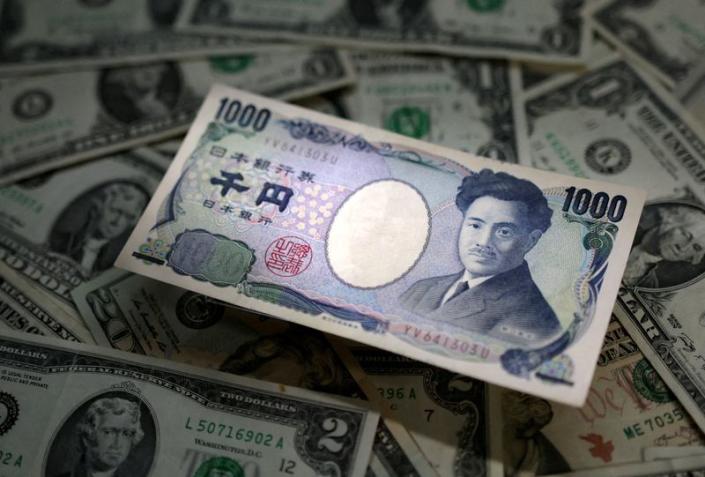The yen slipped past the key 145 mark on Monday to its lowest level against the dollar since November, before recovering as traders checked for possible intervention.
The US dollar hit a one-month high against a basket of major currencies, before steadying. Concerns about the Chinese economy caused investors to seek a safe haven.
Japan’s currency weakened to as low as 145.22 per dollar in early Asian hours, its lowest since November 10, before quickly reversing course in a volatile start to the week. The dollar last fetched 144.78 yen, down 0.12%.
The Bank of Japan has stuck to its ultra-loose monetary policy as global central banks have hiked interest rates, making returns in other countries look more attractive and weighing heavily on the yen.
ALSO SEE: China’s $13tn Provincial Debt Crisis Threatens to Spill Over
Yen down nearly 10% against dollar this year
Japan intervened in currency markets last September when the dollar rose past 145 yen, prompting the Ministry of Finance (MOF) to buy the yen and push the pair back to around 140 yen. The yen is down nearly 10% against the dollar for the year.
“Lack of verbal intervention so far suggests that the patience level of Japanese authorities may have gone up after the latest tweak to monetary policy and the disinflation trends in the United States,” Charu Chanana, a market strategist at Saxo Markets, said.
“Still, traders are potentially cautious of that 145 handle.”
The euro slipped before paring its losses to stand flat against the dollar at $1.094.
The early move helped the dollar index, which measures the buck against six major peers, rise to 103.02, its highest since early July. It was last little changed on the day at 102.88.
Analysts said investors were buying the safe-haven greenback over concerns about the health of the global economy, particularly China. They also pointed to a recent rise in US bond yields on the back of persistent strength in the country’s economy.
Chinese property giant Country Garden’s onshore bonds were suspended, in a fresh blow to policymakers trying to shore up confidence in the economy.
And two Chinese listed companies said over the weekend that they had not received payment on maturing investment products from asset manager Zhongrong International Trust Co.
“High US bond yields and what seems to be a deteriorating environment in the Chinese financial sector are weighing on risk assets,” Chris Turner, head of markets at ING, said in emailed comments.
The Australian dollar slid to its lowest since May at $0.6456 and was last down 0.21% at $0.6483. The currency is often seen as a proxy for investor sentiment about China.
BOJ warnings on yen intervention expected
Meanwhile, Russia’s rouble fell past 100 per US dollar on Monday, driven in large part by the Russian current account surplus shrinking sharply as energy export revenues have dropped and government spending on the Ukraine war has stayed high.
Sterling was roughly flat at $1.269.
After a quiet start to the week, economic data could move currencies.
Investors will watch out for Chinese industrial output and consumer spending data on Tuesday, before the minutes from the latest US Federal Reserve meeting on Wednesday. British inflation figures are also due on Wednesday.
Japanese GDP data is due on Tuesday and Japan releases inflation figures on Friday.
With the yen loitering around the 145 level again, traders expect Japanese officials to start warning of intervention soon as they did in June.
“We believe the MOF will start pushing back in the 145-148 range,” Joey Chew, head of Asia FX research at HSBC, said.
- Reuters with additional editing by Jim Pollard
ALSO SEE:
SoftBank Set to Finally See Green as Tech Valuations Jump
Yield Curve Call Sparks BOJ Policy Doubts as Yen Struggles
Japan to Buy Chips Material Firm as Tokyo Ramps Up Tech Push
























